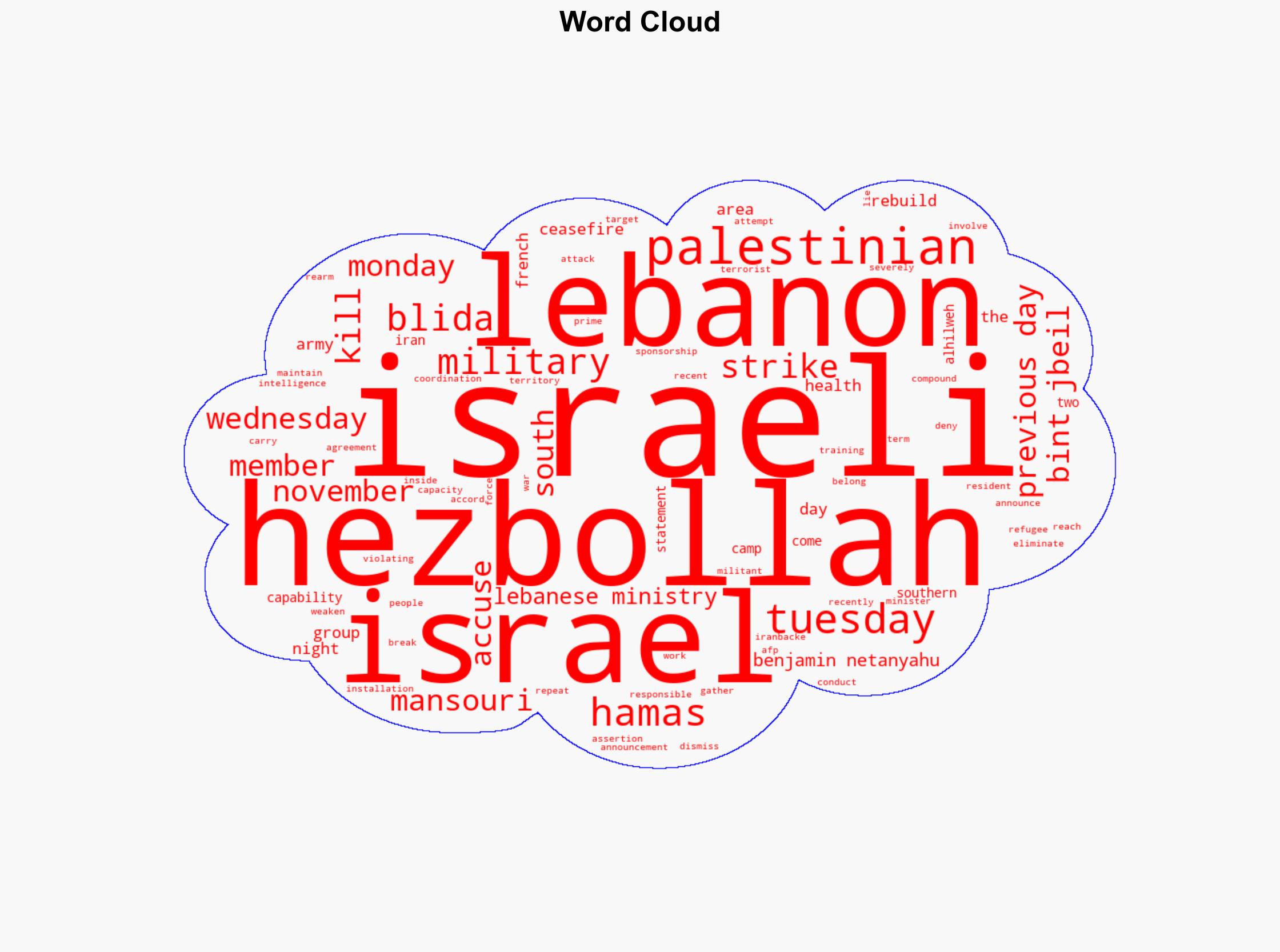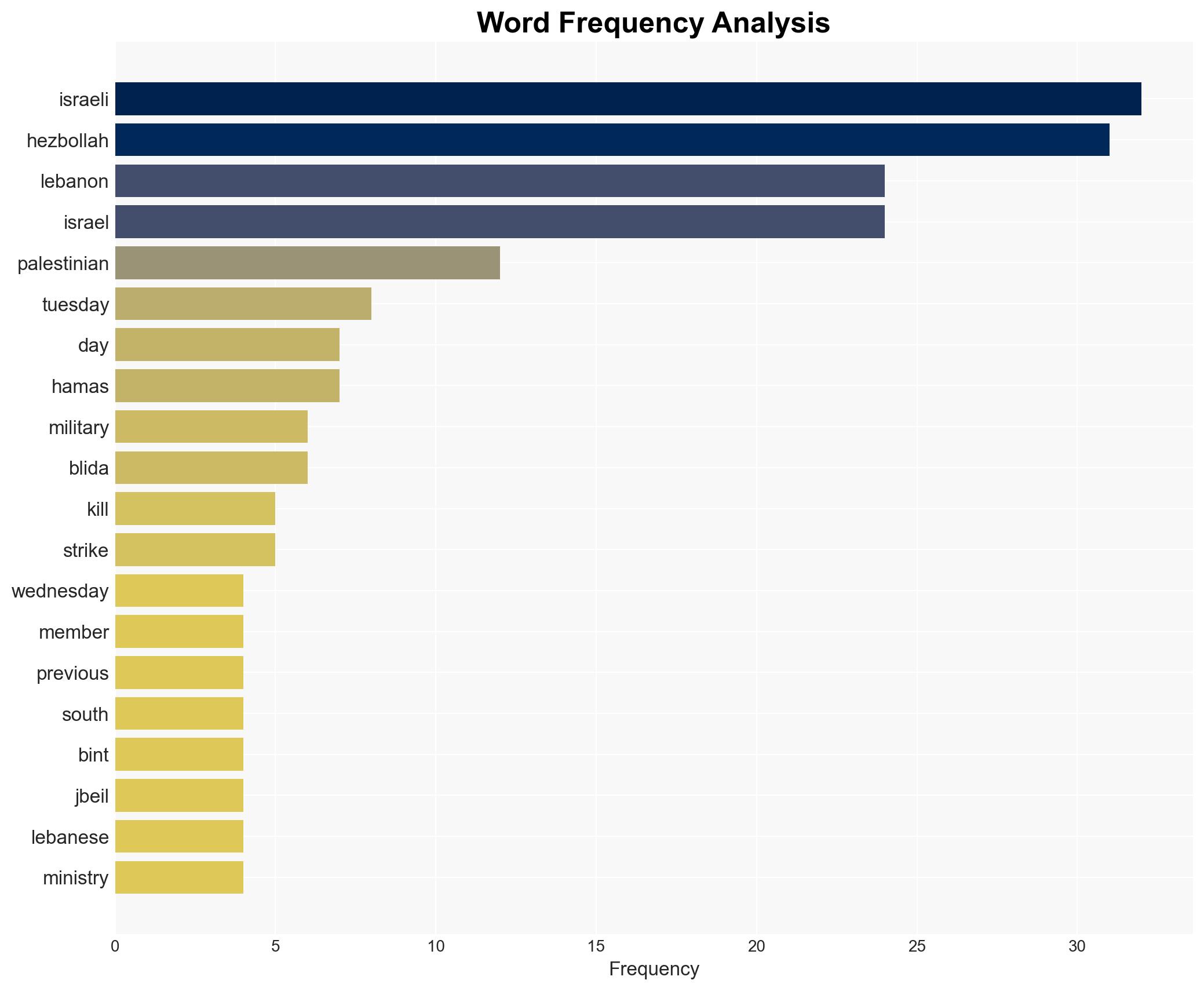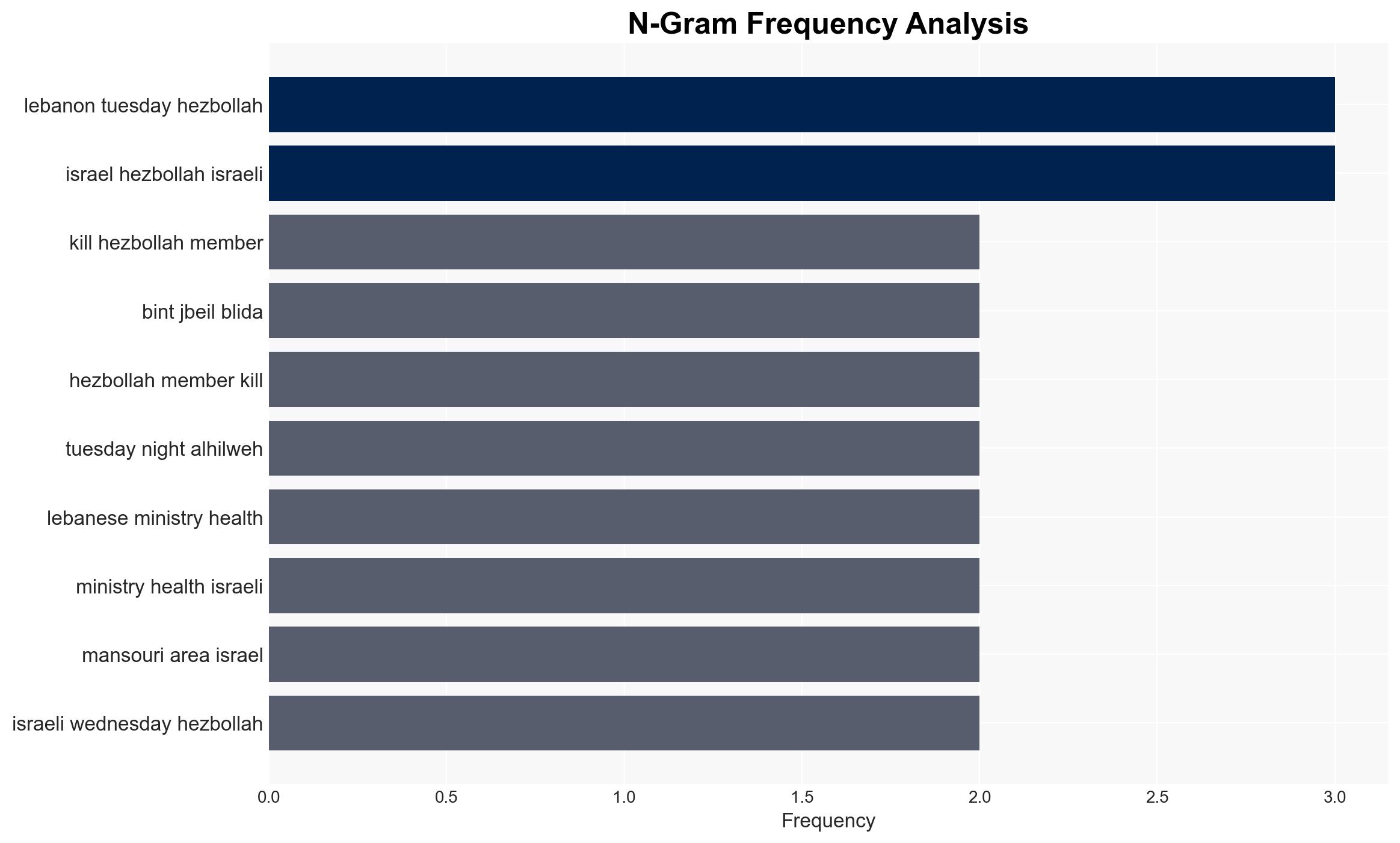Two Hezbollah members killed in south Lebanon says Israeli military – The Punch
Published on: 2025-11-19
AI-powered OSINT brief from verified open sources. Automated NLP signal extraction with human verification. See our Methodology and Why WorldWideWatchers.
Intelligence Report:
1. BLUF (Bottom Line Up Front)
With a moderate confidence level, the most supported hypothesis is that Israel’s recent military actions in southern Lebanon are aimed at preemptively disrupting Hezbollah’s efforts to rebuild its military capabilities. Recommended action includes diplomatic engagement to de-escalate tensions and intelligence-sharing with regional allies to monitor Hezbollah’s activities.
2. Competing Hypotheses
Hypothesis 1: Israel is conducting targeted strikes to prevent Hezbollah from rebuilding its military capabilities, which are perceived as a direct threat to Israeli security. This is supported by Israel’s statements and historical patterns of preemptive strikes.
Hypothesis 2: The strikes are a strategic move by Israel to provoke a response from Hezbollah, potentially justifying further military action or gaining leverage in regional negotiations. This is less supported due to the lack of immediate retaliatory rhetoric from Hezbollah and the potential for international backlash.
Hypothesis 1 is assessed as more likely due to consistent Israeli policy and the strategic importance of preventing Hezbollah’s rearmament.
3. Key Assumptions and Red Flags
Assumptions: It is assumed that Hezbollah is actively trying to rebuild its military capabilities in southern Lebanon. It is also assumed that Israel’s intelligence on Hezbollah’s activities is accurate.
Red Flags: The potential for misinformation or exaggeration by either side to justify military actions. The lack of independent verification of the events could indicate information manipulation.
4. Implications and Strategic Risks
The continuation of Israeli strikes in Lebanon could lead to a broader conflict involving regional actors, including Iran. There is a risk of escalation into cyber warfare or economic sanctions. The situation could destabilize Lebanon further, impacting regional security and refugee flows.
5. Recommendations and Outlook
- Engage in diplomatic efforts with Lebanon and regional powers to de-escalate tensions.
- Increase intelligence-sharing with allies to monitor Hezbollah’s activities and prevent misinformation.
- Best-case scenario: Diplomatic efforts lead to a reduction in hostilities and a reinforced ceasefire.
- Worst-case scenario: Escalation into a broader regional conflict involving multiple state and non-state actors.
- Most-likely scenario: Continued low-intensity conflict with periodic escalations and international diplomatic interventions.
6. Key Individuals and Entities
Benjamin Netanyahu (Israeli Prime Minister)
Hezbollah (Lebanese militant group)
Hamas (Palestinian group)
7. Thematic Tags
Structured Analytic Techniques Applied
- ACH 2.0: Reconstruct likely threat actor intentions via hypothesis testing and structured refutation.
- Indicators Development: Track radicalization signals and propaganda patterns to anticipate operational planning.
- Narrative Pattern Analysis: Analyze spread/adaptation of ideological narratives for recruitment/incitement signals.
Explore more:
Counter-Terrorism Briefs ·
Daily Summary ·
Support us





